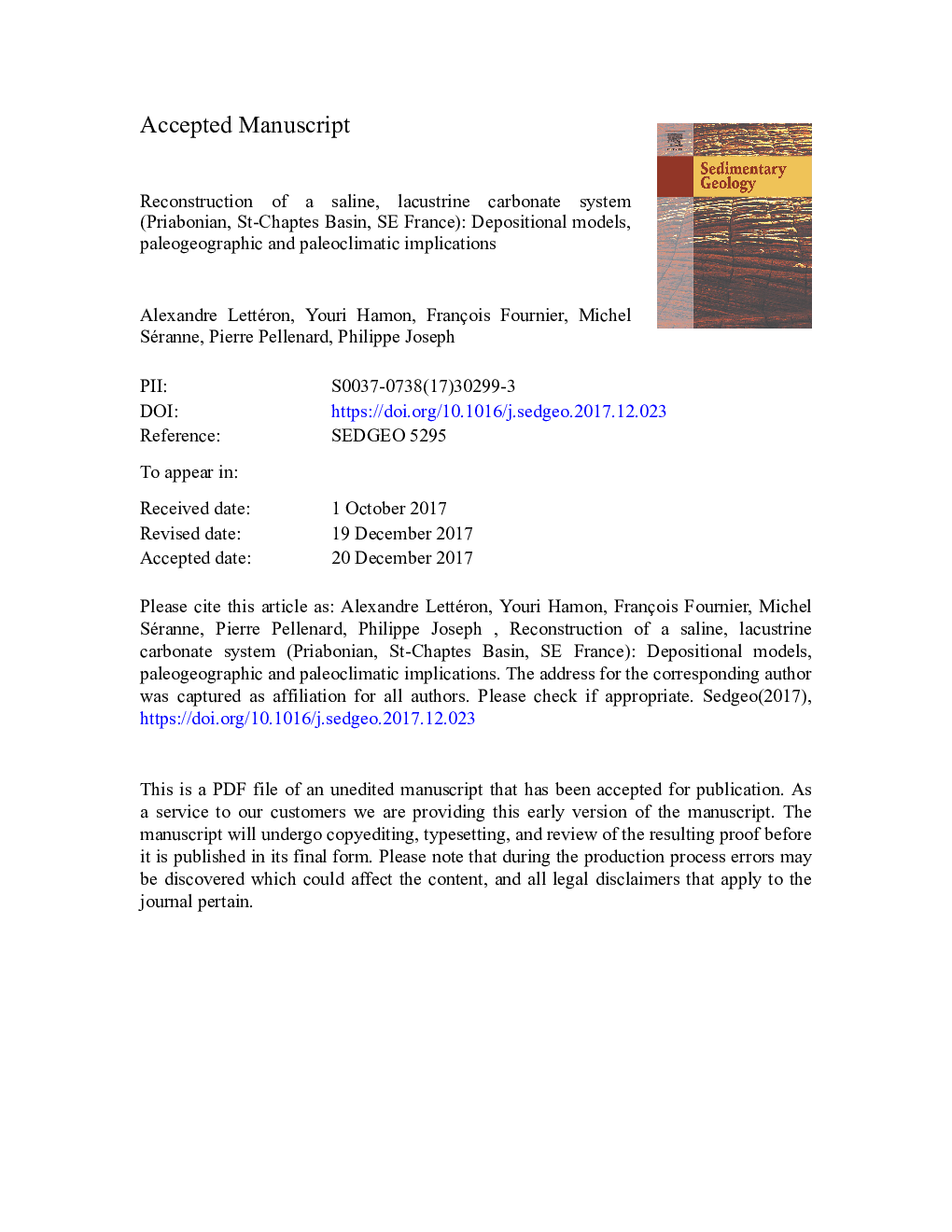| کد مقاله | کد نشریه | سال انتشار | مقاله انگلیسی | نسخه تمام متن |
|---|---|---|---|---|
| 8908520 | 1635996 | 2018 | 99 صفحه PDF | دانلود رایگان |
عنوان انگلیسی مقاله ISI
Reconstruction of a saline, lacustrine carbonate system (Priabonian, St-Chaptes Basin, SE France): Depositional models, paleogeographic and paleoclimatic implications
دانلود مقاله + سفارش ترجمه
دانلود مقاله ISI انگلیسی
رایگان برای ایرانیان
کلمات کلیدی
موضوعات مرتبط
مهندسی و علوم پایه
علوم زمین و سیارات
فرآیندهای سطح زمین
پیش نمایش صفحه اول مقاله

چکیده انگلیسی
A 220-m thick carbonate-dominated succession has been deposited in shallow-water, saline lake environments during the early to middle Priabonian (MP17A-MP18 mammal zones) in the Saint-Chaptes Basin (south-east France). The palaeoenvironmental, paleoclimatic and palaeogeographic significance of such saline lake carbonates has been deciphered on the basis of a multi-proxy analyses including: 1) depositional and diagenetic features; 2) biological components (molluscs, benthic foraminifera, characean gyrogonites, spores and pollens); 3) carbon and oxygen stable isotopes; 4) trace elements; and 5) clay mineralogy. Five stages of lacustrine system evolution have been identified: 1) fresh-water closed lake under dry climate (unit U1); 2) fresh to brackish water lacustrine deltaic system with a mixed carbonate-siliciclastic sedimentation under relatively wet climatic conditions (unit U2); 3) salt-water lacustrine carbonate system under humid climatic setting (unit U3); 4) evaporitic lake (unit U4); and 5) closed lake with shallow-water carbonate sedimentation under subtropical to Mediterranean climate with dry seasons (unit U5). Upper Eocene aridification is evidenced to have started as early as the earliest Priabonian (unit U1: MP17A mammal zone). A change from humid to dryer climatic conditions is recorded between units U3 and U4. The early to middle Priabonian saline lake is interpreted as an athalassic (inland) lake that have been transiently connected with neighboring salt lakes influenced by seawater and/or fed with sulfates deriving from recycling of evaporites. Maximum of connection with neighboring saline lakes (Mormoiron Basin, Camargue and Central grabens, Hérault Basin) likely occurred during unit U3 and at the base of unit U5. The most likely sources of salts of these adjacent basins are: 1) Triassic evaporites derived from salt-diapirs (Rhône valley) or from paleo-outcrops located east of the Durance fault or offshore in the Gulf of Lion; or 2) marine incursions from the south, through Paleogene grabens in the Gulf of Lion.
ناشر
Database: Elsevier - ScienceDirect (ساینس دایرکت)
Journal: Sedimentary Geology - Volume 367, May 2018, Pages 20-47
Journal: Sedimentary Geology - Volume 367, May 2018, Pages 20-47
نویسندگان
Alexandre Lettéron, Youri Hamon, François Fournier, Michel Séranne, Pierre Pellenard, Philippe Joseph,